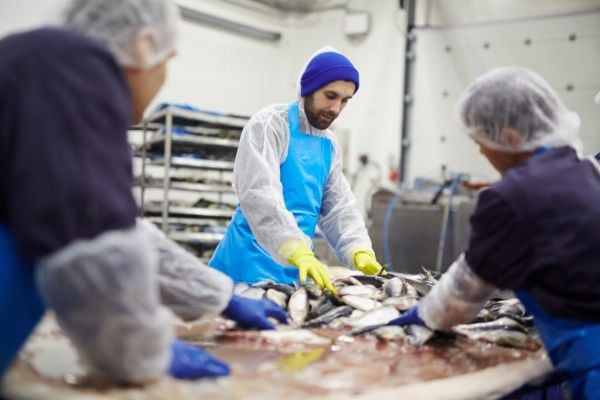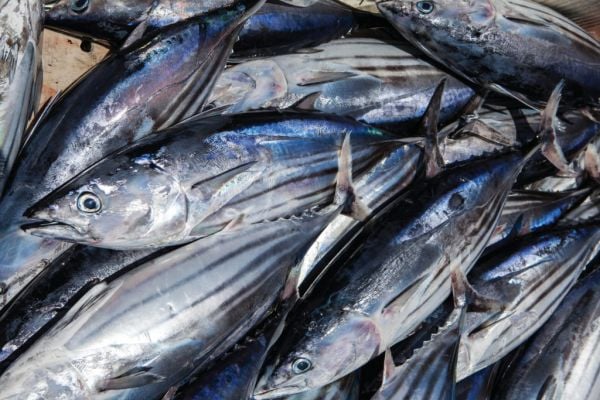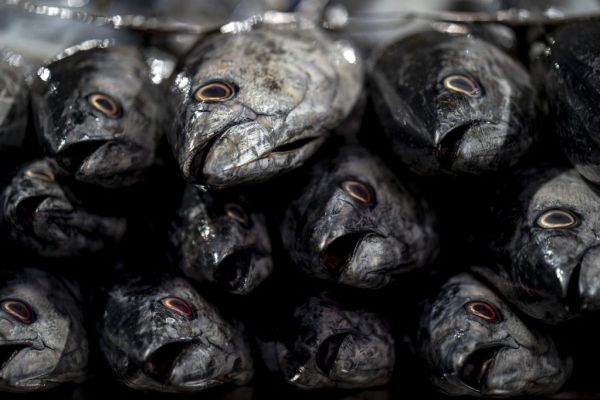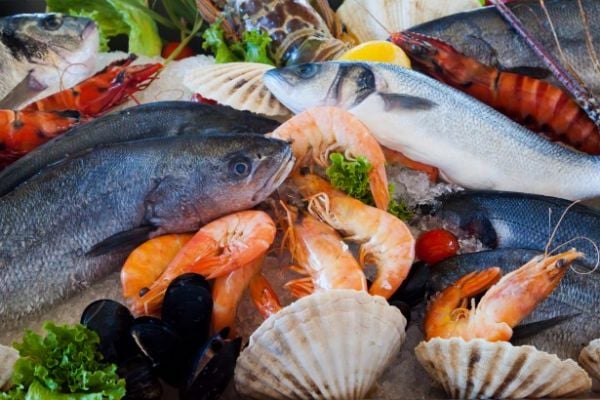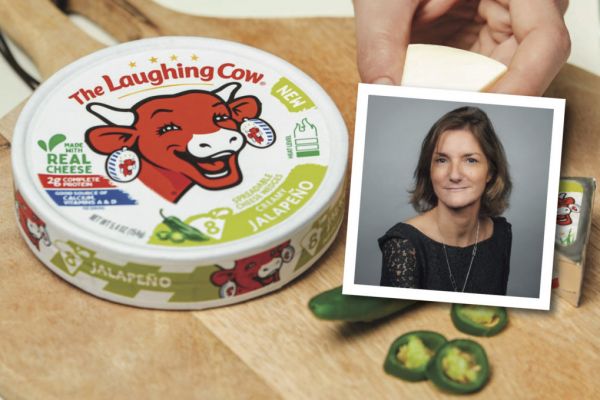The seafood sector has proven itself adept at navigating choppy waters in recent years. ESM reports.
“A historic opportunity” – that’s how Virginijus Sinkevičius, European Commissioner for the Environment, Oceans and Fisheries, recently described the challenge facing governments, the private sector, and international bodies on maintaining marine biodiversity and ensuring that the industries that rely on healthy oceans – not least the fish and seafood sector – can continue to thrive.
This is unlikely to be plain sailing. Aside from sustainability concerns, the seafood industry has faced supply chain challenges in recent months, as a result of Russia’s recent aggression against Ukraine, while high fuel prices and operational costs have hit the EU fishing fleet hard – fuel prices peaked in July 2022, at almost twice the level of the previous year – as well as the seafood-processing industry.
“[Manufacturers of consumer-ready seafood products] have absorbed some of the increased input costs, but not all, so we lost global competitiveness,” Peter Bamberger, the president of CEP (the European Federation of National Organisations of Importers and Exporters of Fish), tells ESM. “The consumer has opted out of seafood and chosen other, cheaper protein sources.”
Self-Sufficiency
As a result of the ever-challenging macro-situation, the self-sufficiency of seafood within the European Union has dropped to worryingly low levels, according to a new report by AIPCE (the EU Fish Processors’ and Traders’ Association) and CEP.
The groups’ annual Finfish Study, which was published last September and takes into account both the 2021 calendar year and the first half of 2022, found that EU self-sufficiency values dropped to 35% in 2021, having stood at more than 42% over a ten-year average.
The report notes that 2021 was a ‘difficult year’ for seafood processors, given the continuation of the COVID-19 pandemic and changes to both supply chains and consumption patterns around the world. While the worst effects of the virus itself appear to have eased, supply chain concerns have persisted.
“EU fishing quotas have decreased over the years, and for important species like Alaska pollock (100%), cod (95%) and salmon (99%), we are very dependent on imports,” says Bamberger. “COVID-19, rocketing fuel costs and lower fishing quotas after Brexit have accelerated a trend towards lower EU production – increasing the need for import. Also, fishing quotas have not been exhausted by EU fishers.
“At the same time, aquaculture production is quite restricted within the EU, while free-trade agreements with countries like Vietnam and Canada have made [the] import of raw material easier.”
Supply continues to lag demand in many seafood categories – an issue that has been exacerbated by Russia’s invasion of Ukraine. With EU sanctions in place, it has become more complex to source seafood-related materials from Russia, increasing the level of uncertainty within the sector, as well as planning and investment decisions. Resourcing wheat flour and sunflower oil, which are imported from Ukraine for processed fish, is also a concern.
“We have, in general, been successful at adapting – selling to other markets, moving production from Russia and Ukraine to other countries, and switching to […] oils [other] than Ukrainian sunflower oil,” says Bamberger. “Brexit and COVID-19 already made us agile, and we are focused on finding potential new ways forward.”
Fostering Growth
Efforts to grow seafood production within the EU to maximise seafood supply have been welcomed by AIPCE-CEP, which states that the stable supply of materials from both EU and non-EU sources are ‘essential for investments in the processing and trading sector’.
It added that trade instruments such as the autonomous tariff quota can secure market access for processors, while efforts should also be made to ensure that state aid regimes for the seafood sector “are equal to that of other sectors,” adds Bamberger. “This includes aid for innovation, digitalisation, energy-saving projects, etc.”
When it comes to European seafood success stories (albeit outside the EU), Norway continues to set the pace. According to the Norwegian Seafood Council, the country exported 2.9 million tonnes of seafood, equivalent to a total value of NOK 151.4 billion (€14 billion) last year – a new record. Compared to 2021 – itself a record year – the value of exports rose by 25%, with the country exporting more than NOK 10 billion (€0.89 billion) worth of seafood in every month of the year.
According to Bamberger, access by EU fishermen to Norwegian waters, “via an EU-Norway fisheries agreement” is an important short-term step that could be taken to alleviate the bloc’s reliance on imports, such are the high catch numbers in Europe’s northerly neighbour.
However, Christian Chramer, the chief executive of the Norwegian Seafood Council, has warned that the country shouldn’t take further export growth for granted in the future, given the impact of the war in Ukraine, an increase in trade barriers, and continued concerns over coronavirus outbreaks, not to mention competition from other markets.
“Although the total value of Norwegian seafood exports was at a record high in 2022, trading conditions were demanding for many who produce our seafood,” Charmer noted. “We must keep this in mind.”
Read More: Norway Exports Seafood Worth €3.6bn In Q1 2023
Seafood Snapshot
The most recent EU Fish Market report, published by the European Market Observatory for Fisheries and Aquaculture (EUMOFA) in December, covers the period up to around the middle of last year, indicating the level to which the prolonged pandemic period continued to upend seafood traffic flows.
The report found that household expenditure on fish and seafood in the EU-27 grew by 7% in 2021, year on year – unsurprising, given the stay-at-home requirements enforced by most European governments. As restrictions eased, out-of-home consumption increased, and it is set to continue before stabilising between 2024 and 2026, the report states, citing Euromonitor data.
The EUMOFA report also indicates the level to which imports and exports were disrupted by the pandemic. Increased imports into the EU, coupled with decreased exports, resulted in a trade balance deficit of 10% in Europe in 2021 – €1.8 billion higher than the previous year. The increase in the trade deficit can also be partly attributed to the euro’s depreciation against the Norwegian krone, which made imports from Norway more expensive, and the increase in high-value imports by the HoReCa channel once pandemic restrictions eased.
As for the performance of several key species, salmon saw a ‘strong increase’ in the value of EU imports between 2020 and 2021, EUMOFA noted, although the corresponding increase in volumes was moderated due to the gradual opening of restaurants.
In terms of tuna, the recent trend of fillet imports outperforming whole tuna continued into 2021, with imported fillet totals ending the year at 190,000 tonnes, while imports of whole tuna dropped by 21%. A ‘steep rise’ in import prices was recorded in the first eight months of 2022, the report notes.
Alaska Pollock – a key species for the EU processing industry – hit a ten-year low in 2021 (to 266,305 tonnes), due in part to limited accessibility of product from China, linked to the strict pandemic restrictions there. EU imports of Alaska pollock from Russia increased by 29% in volume terms and 31% in value terms between 2020 and 2021, and, according to EUMOFA’s report, the bloc continued to increase imports of the species from Russia in the first half of 2022, despite the country’s invasion of Ukraine.
In addition, EU exports of Atlantic mackerel reached their highest volumes for four years (180,169 tonnes) in 2021, while strong demand from Asian and African markets led to export prices increasing by around 20% in the first eight months of 2022.
Finally, sea bass and sea bream saw a significant increase in production in 2021, as EU aquaculture production rose at a faster rate than global production. Prices for both species ‘increased sharply’ in the first half of 2022, EUMOFA noted.
Read More: 5 Takeaways From The Latest 'EU Fish Market' Report
Caught In A Net
According to CEP’s Bamberger, the European seafood-processing sector faces a number of challenges over the coming years, including taking steps to cope with increased costs on all import factors, “especially on energy, but also transport – international freight rates – in a global competitive seafood market,” he says.
Elsewhere, the sector will likely face challenges when it comes to raw-material supplies.
According to Bamberger, “There is a need for the renewal of [the] EEA Agreement with Norway/Iceland, a need for a fisheries agreement with Norway, a need to finalise other free-trade agreements, and a need for sufficient amounts within the autonomous tariff quota.”
Finally, attracting workers to the seafood-processing sector is likely to present another potential headache. “We produce way below full capacity,” says Bamberger. “This is, however, not confined to the seafood industry, but is a general challenge for hiring workers in industry, and public administration.”
Having sailed through a myriad of challenges in recent years, the seafood industry will be hoping for calmer seas ahead.
© 2023 European Supermarket Magazine. Article by Stephen Wynne-Jones. For more fresh-produce news, click here. Click subscribe to sign up to ESM: European Supermarket Magazine.
